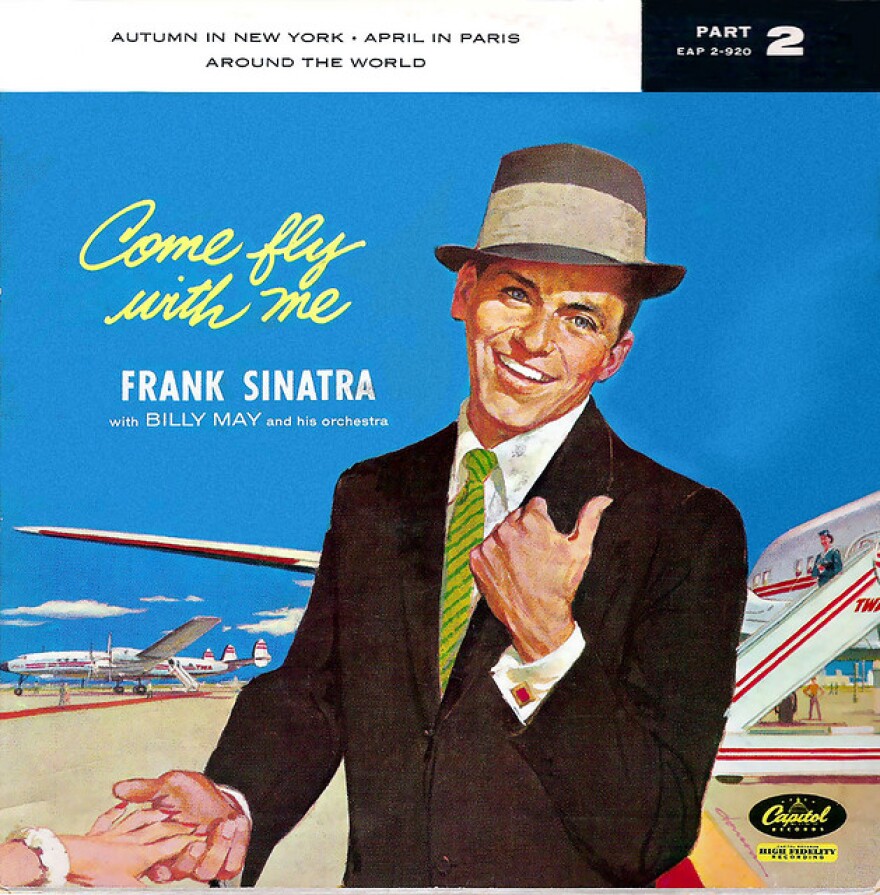One of the hazards of dying is that your legacy can wind up in the hands of people who maybe don’t necessarily “know” a great deal about you.
Maybe you caught the four-hour, two-part HBO documentary on Frank Sinatra last week.
Or maybe you have downloaded the new Sinatra smartphone app.
Or poured a couple of fingers of the recently unveiled “Sinatra Select” edition of Jack Daniels’ fabled Tennessee whiskey.
Frank would have turned 100 this year, so everybody’s weighing in.
Because we live in a tabloidy culture, the Sinatra “tributes” are often revisiting the seamier corners of the Sinatra story.
Among the things that I, for one, will be trying to not pay much attention to: Ava, the wise guys, the Vegas clowning and debauchery with Sammy and Dean.
What I will be paying attention to: the music.
One of the hazards of dying (there are a number of them, it turns out) is that your legacy can wind up in the hands of people who maybe don’t necessarily “know” a great deal about you. Especially if you were a musician.
Thus, as the 100th is being observed, we’re hearing a lot of “That’s Life” and “My Way” and “New York, New York.”

Just as it’s a shame that so many people these days exclusively associate Louis Armstrong with “What a Wonderful World” – his hands-down least-consequential recording -- it’s too bad that the Frank legend is tethered to a lot of his late-career, forced-swagger material, much of which he himself was known to have disdained.
By contrast, my own feeling is that if we want to understand why Frank Sinatra was a star, and why we still are interested in him a century after his birth, we need to look past the finger-snapping hipster. We need to look to the other side of his artistry -- to the mournful, heart-on-sleeve balladeer.

I know this goes against conventional wisdom. But if Sinatra had been merely a mildly jazz-infused hepcat with his fedora cocked at a jaunty angle, he wouldn’t have been Frank; he would have been JoePiscopo’s parody of Frank.
No, it’s the slow stuff that made him the most compelling singer of the 20th century.
But why, exactly? (I tried to address this question in a piece I did for The Hartford Courant when Frank died in 1998; some of what follows is adapted from that piece.)
There’s a standard line about Sinatra, and it is, up to a point, true. The line is: what made Frank distinctive was his phrasing.
What people tend to mean by this is that he sang out of meter -- usually, and sometimes with almost comic exaggeration -- behind the beat. For the record, he was not the first to do this. He himself often credited Mabel Mercer and Billie Holiday, among others, as having assisted him in this direction.
Feminine? Frank? Get serious. The man dug booze and broads, and if you crossed him he'd punch your lights out.
But phrasing was not, I think, really at the heart of Frank's exceptionalness. If it had been, any second-rate lounge lizard could simply have copied the way Frank did it, and of course many did exactly that. What made Frank stand out was something else.
It was, to massively oversimplify, a convergence of tough and tender, of blasé and sentimental -- inside that single, durable throat.
To be sure, The Voice as we now understand it partook of many elements, from the Hoboken street kid to the tuxedoed rat packer.
But there was also a crucial something else in there, and it was in there from the beginning, starting with the ballads he did with the Pied Pipers and Tommy Dorsey’s band. This something else is easy to hear but harder to give a name to -- sensitivity, emotional tenderness, possibly even a slight femininity.
Feminine? Frank? Get serious. The man dug booze and broads, and if you crossed him he'd punch your lights out.
All true. Which is why the soft side was so unexpected and so interesting.

There is probably something deeply Freudian about the spectacle of people (of both sexes, let us remember) going crazy over the tough guy showing he can be tender. Nevertheless.
Perhaps with Frank in mind, Elvis showed he could do this. Without “Love Me Tender” and “Don’t” and “Are Your Lonesome Tonight,” Elvis might simply have been Bill Haley with better -- much better -- hair.
John Lennon could do it. “She Loves You” and “You Can’t Do That” established his cred as a rocker; “If I Fell” and “You’ve Got to Hide Your Love Away” and “In My Life” established him as an artist.
But I digress.
The point is, as we celebrate Frank’s centennial, we should make a special effort to remember and reflect on the slow tunes. Several of these belong to the informal group that Frank called his “suicide songs,” which, if nothing else, suggests that he was not unaware of their emotive payload.
A few examples:
"Where Are You?"
This is a 1937 Jimmy McHugh song that never did much until Frank dusted it off 20 years later for his album of the same name.
"I’ll Never Smile Again"
Sinatra did several versions over the years, but all of them cause us to pause, and reflect on the existential direction of our lives, when we come to the line, “what good would it do?”
"Only the Lonely"
This is an amazing specimen at several levels, including the construction of the song itself, which was written by Jimmy Van Heusen and Sammy Cahn. The 1958 album of the same name was not a huge commercial success, but years later Frank called it his best.
There are, of course, hundreds more.
If you are thinking of sampling a lot of them at one sitting, you might want to be sure you have an ample supply of “Sinatra Select” nearby.
Remembering Rob
This community recently lost one of its great citizens.
Rob Grover was many things to many people: scholar, teacher, philanthropist, to name but a few. In addition, he was simply one of the most interesting and engaging people I have ever known. As I said to somebody the other day, I never had so much as a 30-second conversation with him that I didn’t come away having learned something.
Deepest condolences to Nancy, his wife of 35 years and his devoted partner in a dazzling array of civic and arts outreach activities.
A memorial service will be held Saturday, May 16 at 5:00 pm at the Wadsworth Atheneum.
Read the obituary here.
Steve Metcalf was The Hartford Courant’s fulltime classical music critic and reporter for over 20 years, beginning in 1982. He is currently the curator of the Richard P. Garmany Chamber Music Series at The Hartt School. He can be reached at spmetcalf55@gmail.com.





